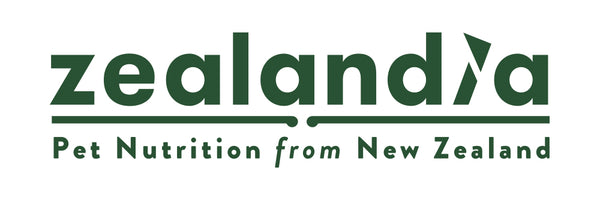Green Tripe for cats & dogs: Benefits, Super Food, Quite Stinky

Written by Dr Sarah-Jane Molier BVM&S MRCVS BSc (United Kingdom)
Increasingly, pet owners and vets are looking for more natural ways to support the health of their pet. ‘Preventative healthcare’ promotes a healthy diet and lifestyle as key components of good health. However, with the wealth of (sometimes misguided) information available at our fingertips via the internet, and the plethora of diets to choose from, it can be hard to know what’s best for our feline and canine friends. This article discusses the potential pros and cons of an increasingly popular ingredient for pets, green tripe.
What is green tripe?
Tripe is the stomach of a ruminant animal, otherwise known as an animal that ‘chews the cud’. While tripe usually comes from cows, sheep and goats are other examples of ruminants. ‘Chewing the cud’ (or ruminating) describes the active process whereby soft boluses of partly digested food are brought from the stomach back into the mouth for further chewing, and then re-swallowed.
A ruminant’s stomach has four compartments: the rumen, reticulum, omasum and abomasum. Food is broken down and starts fermenting in the rumen, reticulum and omasum. The abomasum is considered the ‘true stomach’, being the compartment most similar to non-ruminant stomachs. Any of the four compartments can be used to produce different types of tripe, but the omasum is rarely used because it is very hard to clean and tends to deteriorate quickly.
The nutrient analysis of tripe is approximately as follows:
Protein 13%
Fat 13%
Crude Fibre 3%
Moisture 72%.
‘Green’ tripe refers to a tripe that has not been washed or bleached. It refers to tripe in its natural state, rather than its colour (which is actually usually brown, possibly with a green tinge). In contrast, ‘white’ tripe has been washed or bleached.
What are the benefits of green tripe for cats and dogs?
Unfortunately, veterinary research is lacking in the benefits or potential downsides of green tripe. So, while we can make some assumptions based on what we do know, it’s important to note that these aren’t currently backed by adequate scientific research.
So, what are the potential benefits of green tripe?
Probiotic benefits
Tripe contains ‘good’ bacteria which are involved in the ruminant’s digestion, usually Lactic Acid Bacteria. For this reason, it can be seen as a natural probiotic. Our guts, and those of our pets, contain millions of bacteria, which support digestion and help the gut’s immune system. It’s important to keep this population of ‘good’ bacteria healthy. Probiotics are often used to ‘top up’, or support the health of, the gut microbiome.
Some people claim that the digestive enzymes in green tripe can aid your pet’s digestion too, although this is yet to be scientifically proven.
Protein source
Green tripe contains around 13% protein, so is a good source of protein.
Essential Fatty Acids
Green tripe contains a good balance of omega-3 and omega-6 essential fatty acids (EFAs). Omega-6 EFAs mainly provide an energy source, whereas omega-3 EFAs have numerous health benefits; including supporting a healthy heart, brain and metabolism. While both are important, your pet ought to consume more omega-3 than omega-6 fatty acids.
Vitamins and Minerals
Green tripe is a source of numerous vitamins and minerals; namely calcium, phosphorous, iron, potassium, zinc, selenium, manganese, vitamin B12 and potassium.
Moisture content
Green tripe is around 73% moisture, which could benefit some cats or dogs, who aren’t always the best at drinking enough water!
Palatability
Most dogs and cats love the taste of green tripe! A small amount of green tripe mixed with food, or as an ingredient in a complete diet, can dramatically improve palatability.
Sustainability
Technically, tripe is a by-product of the meat industry, otherwise known as offal. This makes it a sustainable ingredient for pet food since it means less waste. Just because most people wouldn’t choose to eat it, doesn’t necessarily mean it’s low quality. As with all meat, the quality will vary depending on the source.
So, it’s easy to see why some people describe tripe as a superfood! Now, let’s look at whether there are any risks of feeding tripe to our pets.
What are the cons of green tripe for cats and dogs?
If your pet has a medical condition and you are considering offering any new food, then you should speak with your veterinarian first. They will be able to advise you if tripe is safe for your cat or dog or to refer you to a veterinary nutritionist.
Here are the general cons to feeding tripe:
Risk of bacterial contamination
Raw tripe is a potential source of pet and human infection with bacteria, such as E. Coli (Escherichia coli). If you feed any raw food to your pet, it’s important that you follow strict hygiene protocols when handling raw meat, as well as your pet’s faeces. To avoid this risk, you could consider green tripe as an ingredient in a complete pet food or in commercial treat form instead.
Its nutrient profile
Some green tripe products contain inappropriately high levels of nutrients, such as sodium.
Green tripe alone is not nutritionally balanced and complete, so it should never be fed as a sole or majority diet.
It’s stinky!
Green tripe is certainly stinky, which isn’t surprising when you consider what it is! If you’d like the benefits of green tripe without the stink, you could consider a pet food containing green tripe as an ingredient, which won’t have the same pungent smell.
Now you know the pros and cons, let’s look at how to feed green tripe to your cat or dog.
How can I feed green tripe to my cat or dog?
Green tripe is available in many forms; including raw, cooked, dried, frozen, in treats, in canned food or in kibble. Remember, if you are choosing to feed any raw meat to your pet, you should educate yourself on proper hygiene practices first, to keep both you and your pet safe. A conversation with your vet is a great starting point.
If you’re choosing to feed a homemade raw or cooked diet to your pet, then it’s important that you consult a veterinary nutritionist first. Cats and dogs each have unique nutritional needs, which differ from humans, and it’s surprisingly difficult to ensure their diet is nutritionally complete and balanced. A veterinary nutritionist will also be able to advise you on a suitable diet for any underlying health conditions.
An alternative would be to feed a nutritionally balanced and complete diet containing green tripe or offer green tripe treats.
As with all things, the quality and therefore the nutritional benefit of products will vary. Make sure you are buying from a company you trust and if you aren’t sure, ask your vet for advice.
How much tripe should I feed my cat or dog?
If you are choosing to feed green tripe for its benefits, on top of your pet’s usual food, then you should consider this a treat. Treats should never make up more than 10% of your dog or cat’s daily calorie allowance or intake. This is to ensure that your pet is eating the correct balance of nutrients, in the right proportions. To be clear, that means ALL treats shouldn’t exceed a total of 10% (not per treat).
If you are feeding green tripe in a complete, nutritionally balanced food then you should follow the feeding directions from the manufacturer.
If you are making your pet’s diet yourself, then you should consult a veterinary nutritionist on amounts to give. We all understand the importance of diet in our overall health, so a consult with a veterinary nutritionist is essential to be sure you are getting the balance right.
If you’re offering green tripe in any form to your pet for the first time, it’s important that you start slowly. Offer a tiny amount, to begin with, and gradually increase this over a couple of weeks. As with any new food, if you don’t introduce it gradually you run the risk of your dog or cat suffering with diarrhoea.
Summary
Dogs and cats need a complete, nutritionally balanced diet which is suitable for their age and any underlying health issues. Your vet or a veterinary nutritionist are the best people to advise you on what is safe and appropriate for your pet’s unique needs. Although more research is needed, green tripe certainly seems to have many potential benefits. At present, the safest way to include green tripe in your pet’s diet would be within a complete pet food, as a cooked or dried treat or under the guidance of a veterinary nutritionist.




